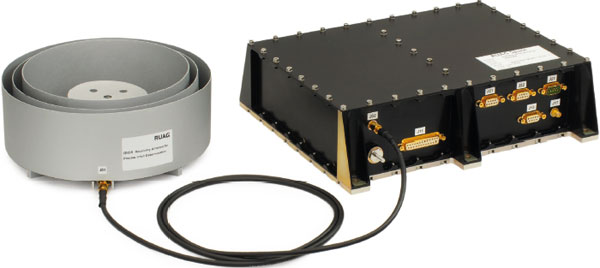The Copernicus POD (Precise Orbit Determination) Service is part of the Copernicus PDGS Ground Segment of the Sentinel missions and is in charge of the provision of Precise Orbital Products and auxiliary data files to the PDGS. The Copernicus POD Service was developed and is being operated by a GMV-led consortium from Tres Cantos, Spain. Additionally, for Sentinel-3 there is a POD Instrument Processing Facility in charge of generating the Near Real Time products running directly at the S-3 PDGS facilities.
Information on the elements conforming the the CPOD Service is available at the CPOD Service section under the Sentinel-3 Missions menu.
This web page contains all information related to the CPOD Service, the POD products and their performance. Moreover, the CPOD Service regularly provides dynamic content for users who want to use the POD Orbital Products. This information is structured in the following sections:
- POD Products and Requirements: the description of the different precise orbital products generated by the Service are described in this section, together with the associated requirements in timeliness and accuracy.
- Satellite Parameters for POD: this section contains all the different parameters related to the spacecraft that are necessary for performing POD. This includes a description of the mass history file, manoeuvre history and attitude history of each satellite.
- POD System Baseline and Reprocessing Campaigns: this section contains the POD System baselines together with the deployment date and a description of the corresponding changes implemented, as well as the currently used POD models and settings by the Copernicus POD Service. The execution of reprocessing campaigns is also registered in this section.
- EGP Information: a vital part of the POD processing based on GNSS is the accurate knowledge of the constellation (in this case, GPS) satellites' orbits and clocks. The POD Service uses this information routinely from the EGP (External GPS Provider) for the Near Real Time and Short Time Critical products, whereas these inputs are retrieved from IGS (International GNSS Service) for Non Time Critical products.
- SLR Tracking: the involvement of the International Laser Ranging Service (ILRS) Community in the Sentinel-3 mission is addressed in this section, explaining the active role in the external validation of precise orbital products and different statistics on the SLR stations currently tracking Sentinel-3.
- S3 POD Document Library: relevant documents for the POD Service are attached in this section, mainly the File Format Specification related to the format that all files generated by POD follow and the Product Handbook, describing the implemented physical models with which orbital products are computed.
- Communication: the Copernicus POD Service actively takes part in all related conferences and workshops in Europe and many of the most important worldwide. For this purpose, papers and posters are generated and presented including information on the service, the achieved accuracy and modelling improvements relevant for the scientific community. This sections includes links to specific papers and posters available to users, as well as future plans for presentations.
- Quality Control: a number of metrics and comparisons to external solutions are routinely computed by the Copernicus POD Service in order to ensure that the generated precise orbital products regularly meet their requirements. These include GNSS processing statistics such as number of observations used, code and carrier phase residuals, SLR residuals and orbital differences with respect to independent centres.
- FAQ: Frequently Asked Questions section addressing issues that users of the POD products have raised in the past and that may come in handy for other users in the community.

Example of GPS antenna and receiver on-board Sentinel-1, -2, and -3